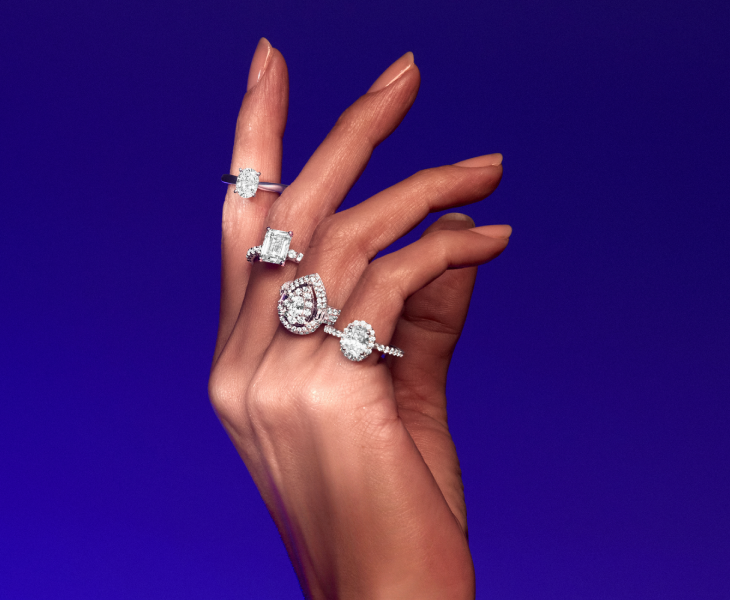Table of Contents
Introduction to Diamond Cuts
So, you’re in the market for a diamond, and you keep hearing the term “cut.” But what does that really mean? It’s not just about how the diamond looks; it’s a crucial factor in its overall beauty and value. Let’s break it down together!
Understanding Diamond Cut
What is Diamond Cut?
Diamond cut refers to how well a diamond has been shaped and faceted. It’s one of the key aspects that contribute to a diamond’s overall appearance. A well-cut diamond will reflect light beautifully, creating that stunning sparkle we all love.
Importance of Diamond Cut
You might be wondering, why is the cut so important? Think of it this way: you could have the most beautiful raw diamond in the world, but if it’s poorly cut, it won’t shine as it should. The cut affects everything from how the diamond looks in terms of brilliance to how much light it reflects.
The Four Cs of Diamonds
When discussing diamonds, you’ll often hear about the Four Cs: Cut, Clarity, Color, and Carat Weight. Each plays a vital role in a diamond’s overall quality and value.
Clarity
Clarity refers to the presence of internal or external flaws (known as inclusions and blemishes). The fewer imperfections a diamond has, What does diamond cut mean the more valuable it is.
Color
Color grades diamonds on a scale from D (colorless) to Z (light yellow). A higher grade means a more valuable stone, but some people prefer the warmth of slightly colored diamonds.
Carat Weight
Carat weight measures the size of the diamond. One carat equals 200 milligrams, and larger diamonds are generally rarer and more expensive.
What Carat Weight Means
While many people focus on carat weight, it’s essential to consider it in conjunction with the cut. A well-cut smaller diamond can appear more brilliant than a poorly cut larger one.
Types of Diamond Cuts
Brilliant Cut
The brilliant cut is designed to maximize a diamond’s sparkle. It typically has 58 facets, which help reflect light beautifully. This is the most popular cut for engagement rings.
Princess Cut
The princess cut features a square shape and sharp corners. It offers a modern alternative to the classic round cut while maintaining significant brilliance.
Emerald Cut
Unlike the brilliant cut, the emerald cut has fewer facets and a more elongated shape, creating a unique “hall of mirrors” effect. This cut showcases the diamond’s clarity.
Asscher Cut
Similar to the emerald cut, the Asscher cut is square but has larger step-like facets. It’s known for its vintage look and is a favorite for those who appreciate Art Deco styles.
Round vs. Fancy Shapes
While round cuts are traditional, fancy shapes like oval, pear, and marquise can also be stunning. Each shape has its own charm and can reflect light in unique ways.
How Diamond Cut Affects Sparkle
Light Performance
The way light interacts with a diamond is significantly affected by its cut. A well-cut diamond allows light to enter through the top and reflect off the facets, creating that dazzling sparkle.
Brilliance vs. Fire
Brilliance refers to the white light reflected from the diamond, while fire describes the colorful flashes of light. The cut of the diamond affects both qualities, making it essential for maximizing beauty.
Choosing the Right Cut for Your Diamond
Factors to Consider
When selecting a diamond cut, consider personal preferences and style. Do you prefer a classic round diamond or a trendy pear shape? Each cut has a different aesthetic that appeals to different tastes.
Personal Style and Preference
Your personal style plays a significant role in your choice of cut. If you like traditional elegance, a round or princess cut might be your best bet. If you’re more modern, lab made diamonds, perhaps an emerald or oval cut will catch your eye.
The Role of Cut in Value
How Cut Impacts Pricing
The cut of a diamond can significantly influence its price. Generally, a higher quality cut can increase a diamond’s value substantially, making it a crucial aspect to consider when shopping.
The Balance of Beauty and Cost
While cut is vital, it’s important to find a balance between beauty and cost. Sometimes, opting for a slightly lower cut grade can allow you to afford a larger diamond without sacrificing too much sparkle.
Conclusion
Understanding diamond cut is essential for anyone looking to invest in this timeless gem. It influences not only the aesthetic appeal but also the value of the diamond. So next time you’re out shopping for that perfect piece, keep in mind that the cut is a vital factor that deserves careful consideration. Whether you’re drawn to the classic round brilliance or the unique charm of a fancy shape, knowing what each cut offers will help you make the best choice for your style and budget.
